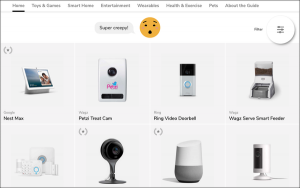 By Tess Kennedy, Published November 4, 2014
By Tess Kennedy, Published November 4, 2014
For B2B companies, content marketing is still on the rise. In Content Marketing Institute’s most recent benchmark report for the US, they noted that the number of marketers using a content marketing strategy has risen yet again last year – up to 93% of all B2B marketers.
If you’re one of these marketers who’s already doing all the right things – blog posts, premium content, calls to action, etc. – why is your strategy not working?
eMarketer delved into a few reasons reasons that your B2B content strategy may not be working, and it isn’t always because you’re creating the wrong content. Your content strategy could be working in your favor, and you may just be looking for success in the wrong places.
Leads aren’t everything
Many marketers measure content strategy success based solely on number of leads or revenue driven from their strategy. Number of leads, cost per lead, and traffic to lead ratio are great ways to measure conversion, but they don’t give you an entire picture of the effectiveness of your content marketing campaign.
Intangible KPIs like brand awareness are essential for seeing the full scope of your content strategy’s results.
eMarketer explains that content marketers are focusing all too much on only tangible KPIs (key performance indicators) like revenue results. Intangible KPIs like brand awareness and brand perception are just as essential for seeing the full scope of your content strategy’s results.
When putting together reporting on your content strategy, try to look past the revenue metrics. Intangible metrics are difficult (and sometime impossible) to quantify, but are important to help you identify the places your content strategy is working.
Contently produced a report of the intangible metrics that marketers wish they could report on. Here are the top metrics that marketers wish they could see more easily –
- 60% wish they could see how people’s opinions of their brand are changing due to content.
- 55% of marketers would like to see how likely a reader is to purchase their product (use their service) due to their content.
- 50% wish they could see how much real attention people are paying to the content they created.
- 48% think it would be useful to see how much brand awareness their content is driving.
- 42% would like to know which conversions have previously engaged with their content.
All 5 of these metrics would be great to see, but some are difficult to measure. Because of this, many businesses put a majority of their confidence in metrics like revenue, leads, or ROI. Especially in the first months, revenue may not be there, which leads marketers into thinking their content strategy isn’t working.
Look past revenue
If you’re getting discouraged due to lack of revenue during the first year of your B2B content marketing campaign, take a step back and look at the intangible metrics that may be working in your favor. Exposure and brand awareness are hugely important factors that can have a great effect on your business.
Try finding little wins, like a keyword where you’ve improved your ranking or how many downloads you’ve seen from a piece of content.
Intangible metrics are essential because your readers are all in different places in the buyer’s journey. While one person reading your blog post may be ready to download your white paper or request more information, another person may just be doing high level searches for an answer to their question.
By reading your content, both of these people are exposed to your brand. The person who isn’t ready to contact your sales team is still seeing your company as an authority on the topic. They may not be ready to fill out your form and become a lead now, but they have a better chance of remembering you as a thought leader on the topic in the future.
Combine metrics
If you have trouble putting faith in intangible metrics, try coupling them with metrics like organic traffic and keyword ranking. Both of those metrics give you a good picture of how your content is working to drive people to your site, even if they’re not converting quite yet.
To get a full picture of how your content strategy is working, be sure to report on your website KPIs each month. Take note of all the traditional metrics, but take a stab at trying to quantify some intangible metrics by finding little wins, like a keyword where you’ve improved your ranking or how many downloads you’ve seen from a piece of content.
Even if it’s impossible for you to really know how much attention a reader is paying to your content, combining that intangible metric with a more tangible metric like time on site can give you a better picture of your content’s impact.
Business Articles | Business 2 Community
(320)
Report Post






